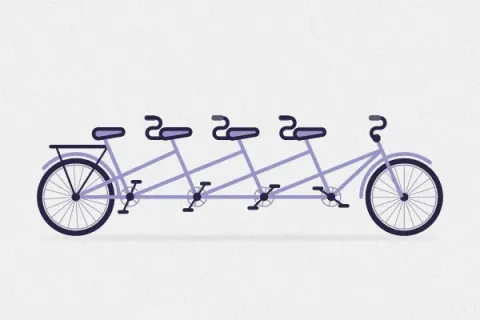Successful requirements definition and management requires an understanding of the various types of requirements, the best ways to write requirements, and strategies that will help you manage requirements efficiently throughout your project or product development lifecycle.
This guide will provide you with tips, best practices, and suggestions for further reading to gain a comprehensive understanding of the ins and outs of requirements definition and management.
Keep reading or jump ahead to the section that interests you most:
- Requirements Definition
- What Are Requirements?
- How to Write Requirements Documents
- Requirements Traceability
- How Important is Requirements Management?
- The Hidden Benefits of Requirements Management
- Finding and Using the Best Requirements Management Tool
- Requirements Definition & Management: Best Practices
- Improve Your Requirements Management
What Is Requirements Definition?
Requirements definition is the process of gathering, understanding, refining, prioritizing, and validating everything a product or project needs to succeed. Effective requirements definition is essential to ensure your end product meets the needs of users and other stakeholders.
What Are Requirements?
Before you can start defining your requirements or writing a requirements document, you need to understand what requirements are and how to gather them. Requirements define the needs of the customer as well as the needs of the business, so there are many who will need to contribute to the complete list. Ultimately, requirements come from all of your project or product's stakeholders, which may include end users, customers, partners, executive management, product management, engineering, sales, support, and operations.
Requirements gathering needs to include both functional and non-functional requirements. Functional requirements ensure that your end product is what the customer wants. While non-functional requirements ensure you stay within your limits.
How to Write Requirements Documents
To ensure a successful release, you need a proper requirements document. This document is comprehensive, and it’s about more than the product requirements. It includes:
- The purpose of the product.
- That purpose broken down into features.
- Release criteria goals.
- Review(s) from the stakeholder(s).
Here are some detailed tips and instructions for writing requirements and requirements documents:
- How to Write a Product Requirements Document (PRD)
- How to Write a Software Requirements Specification (SRS) Document
- Requirements Engineering: 9 Best Practices with Examples
Requirements Traceability
Requirements traceability helps you connect requirements to other development artifacts, like testing or issues. It's used to track requirements to prove that requirements have been fulfilled.
Traceability is also critical to proving compliance during an audit. And it supports impact analysis and risk management. Learn everything about traceability — from who needs it to how to create various types of matrices.
Requirements Traceability Matrix — Everything You Need to Know

How Important is Requirements Management?
Managing requirements is a continuous process throughout the product lifecycle. It's essential to a successful project or product. In fact, poor requirements management is the #1 reason why projects fail! Learn the process of managing requirements and how to do it well:
Requirements Management: Modern Tips, Tactics, & Tools

The Hidden Benefits of Requirements Management
You can get a lot out of managing requirements with the right approach. For instance, with change analysis, you can see the impact of a change to a requirement before the change is made. This is especially useful for risk analysis. Find out more in Analyzing the Impact of Requirements Change.
Using the right requirements management tool can also improve communication and teamwork.
4 Ways Requirements Management Can Improve Teamwork

Finding and Using the Best Requirements Management Tool
If you’re wondering if you need to upgrade your current requirements management tool or process, review these 10 Signs You’ve Outgrown Your Requirements Management Tool. By upgrading your requirements management tool or process, you may be able to save a lot of time and money.

And, if your team relies on Jira, you may be wondering: Can You Use Jira for Requirements Management?

Requirements Definition & Management: Best Practices
Requirements definition and management is no small feat. Simplifying any part of the process could save you a lot of time and effort. Here are some of the best tips and examples of ways you may be able to improve your own processes:
- How to Simplify Requirements Gathering & More With Reuse (6 Tips for Reusing Requirements)
- 5 Best Practices for Reducing Requirements Churn
- IMT Leverages Perforce ALM to Centralize Requirements Management and Reduce Risk
Software Development Best Practices, From Planning a Theme to Setting Requirements
Improve Your Requirements Management
Perforce ALM simplifies the entire development lifecycle. It lets you easily track and trace requirements, conduct impact analysis, and more. It’s yours free for 30 days.
Manage Requirements In Perforce ALM
Need to see more first? Check out our 20-minute demo to get an overview of Perforce ALM's capabilities.
